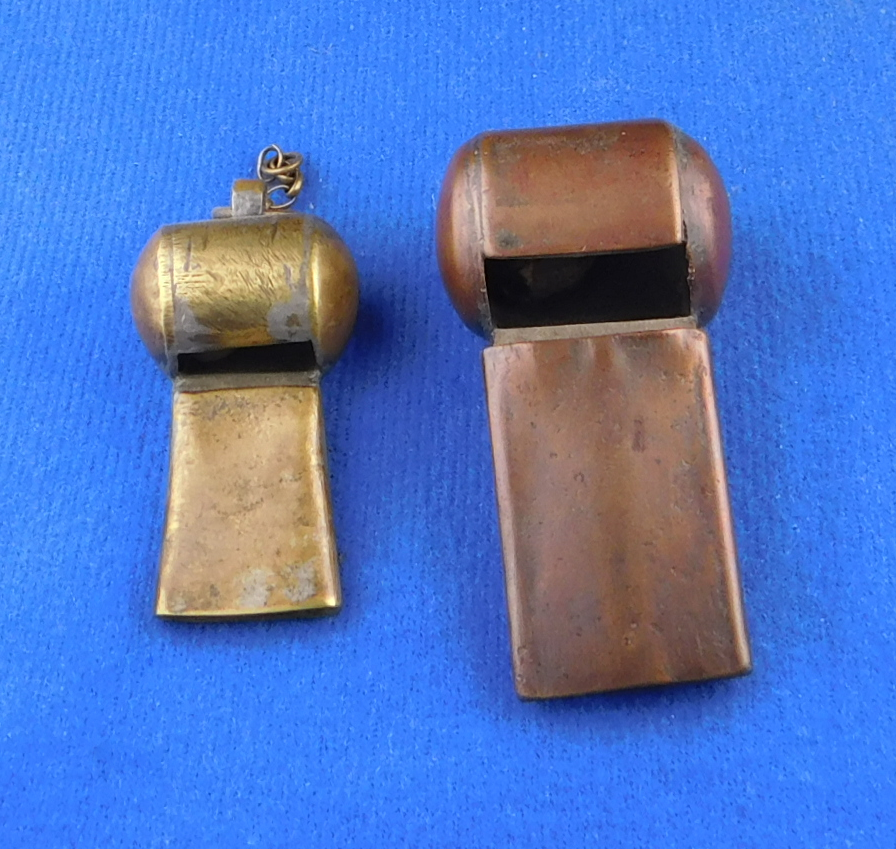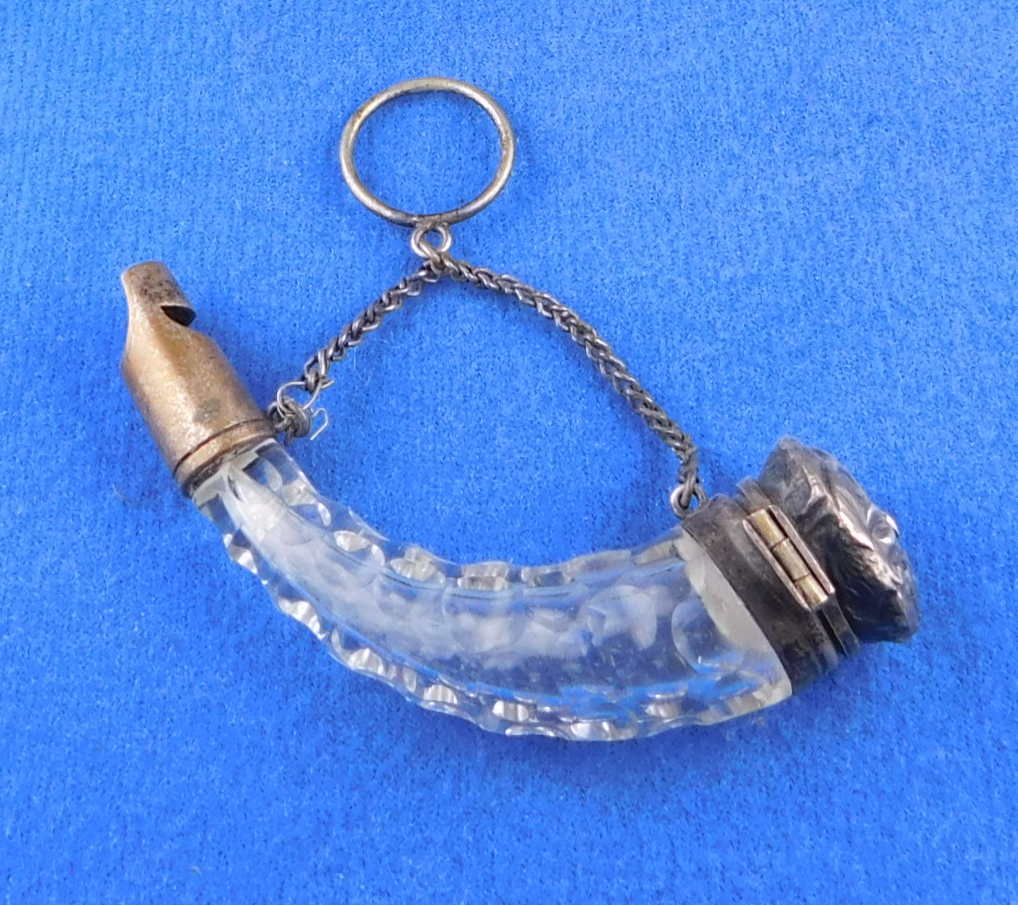Spotlight > Whistle Categories > Siren > 097
Whistory:
Typically all hand sirens have perpendicular to the mouthpiece wheels and they are internally driven. In other words they are inside a casing or shell of some sort. Most times there are 5 hole wheels ( adjustable on center pins ) with the holes cut at angles and the sound accelerates correspondingly as they are blown from weakly to harder. Other times they are thin steel wheels with angle holes pressed and are non-adjustable.
In 1873 an exterior ‘windwheel’ was patented with a whistle by Wade under toy-whistles. In 1889 Schopfield again employed an exterior wind-wheel.
So we find in this whistle a fairly robust wheel set on the exterior of a round whistle above the window.
It appears to be a production whistle, but as yet it is the first we have seen.
Let’s take a closer look…
Whistology:
Here are the patents from Google search for 1873 – Henry J Wade
His comments in the patent description:
‘This toy consists of a screw-like wind-wheel combined with a mouth-whistle in such manner that the wind issuing from the whistle will act on the wheel and cause it to rotate rapidly.’
‘where the wind-wheel is arranged. It has a cylindrical air-passage, (1, extending along it from the mouthpiece, and two orifices, b b, through which the air issues from the passage. These orifices are formed in the ordinary way by cutting notches in the sides of the whistlestock in such manner that sharp edges are presented to the escaping air, and the outer inclined planes forming these sharp edges are made at such angle as to direct the issuing air to the wheel.’
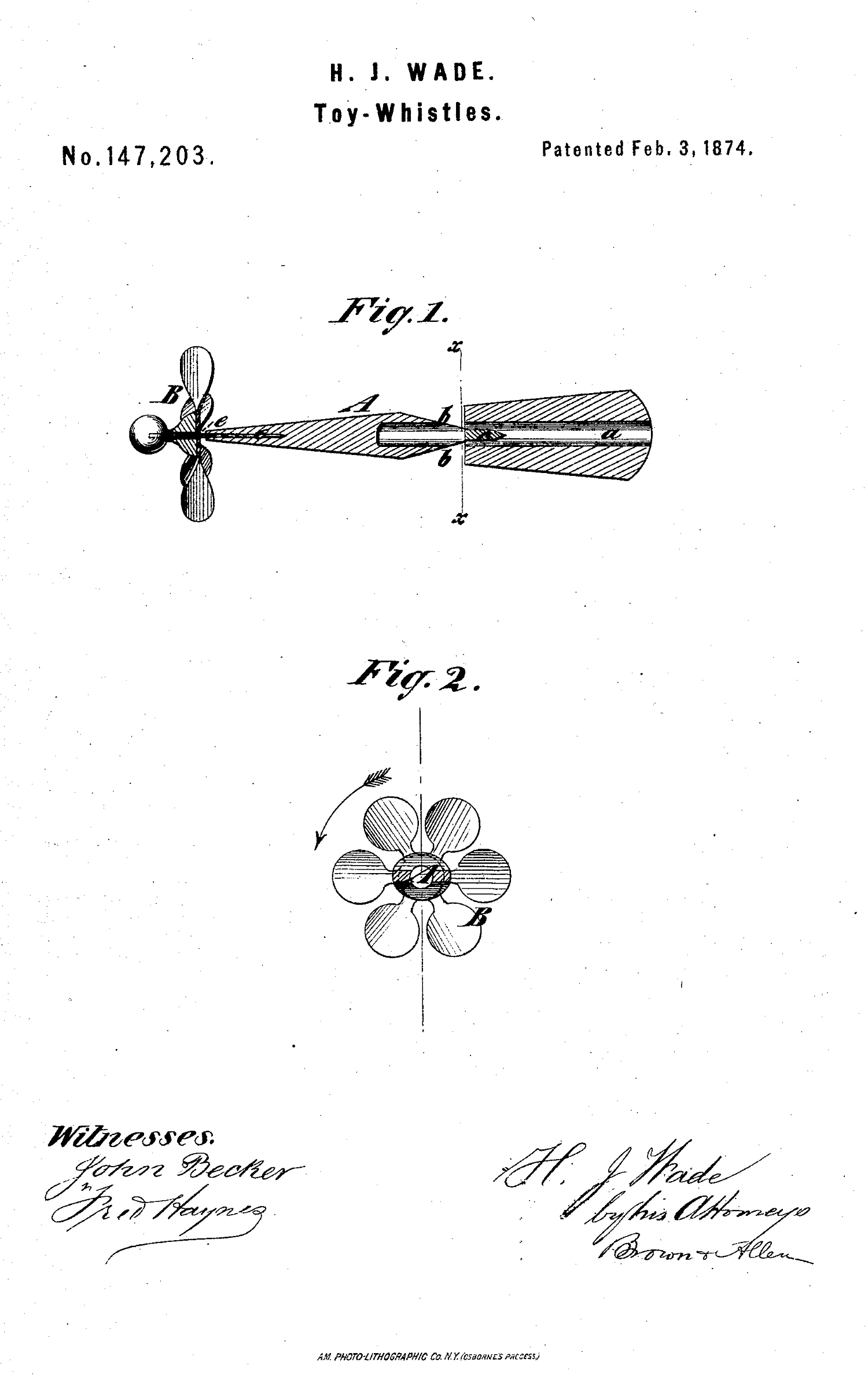
1889 John Schofield New Haven Connecticut.
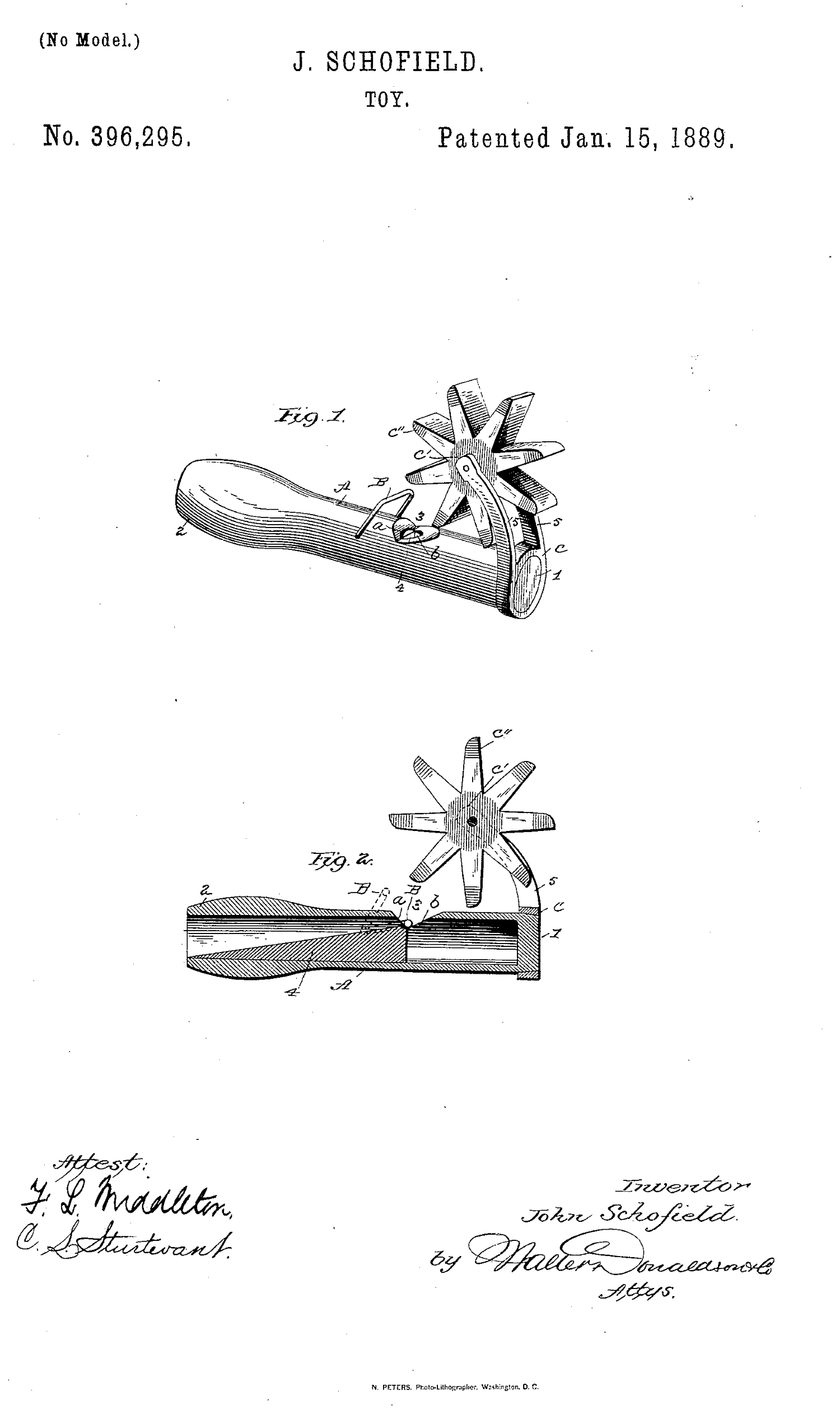
A tin whistle employing the exterior wind wheel was found, but the dynamics are different in that the wheel makes a trilling sound like a ball or pea inside and escargot whistle. However, when it is blown vigorously it cuts out altogether and only whistles.
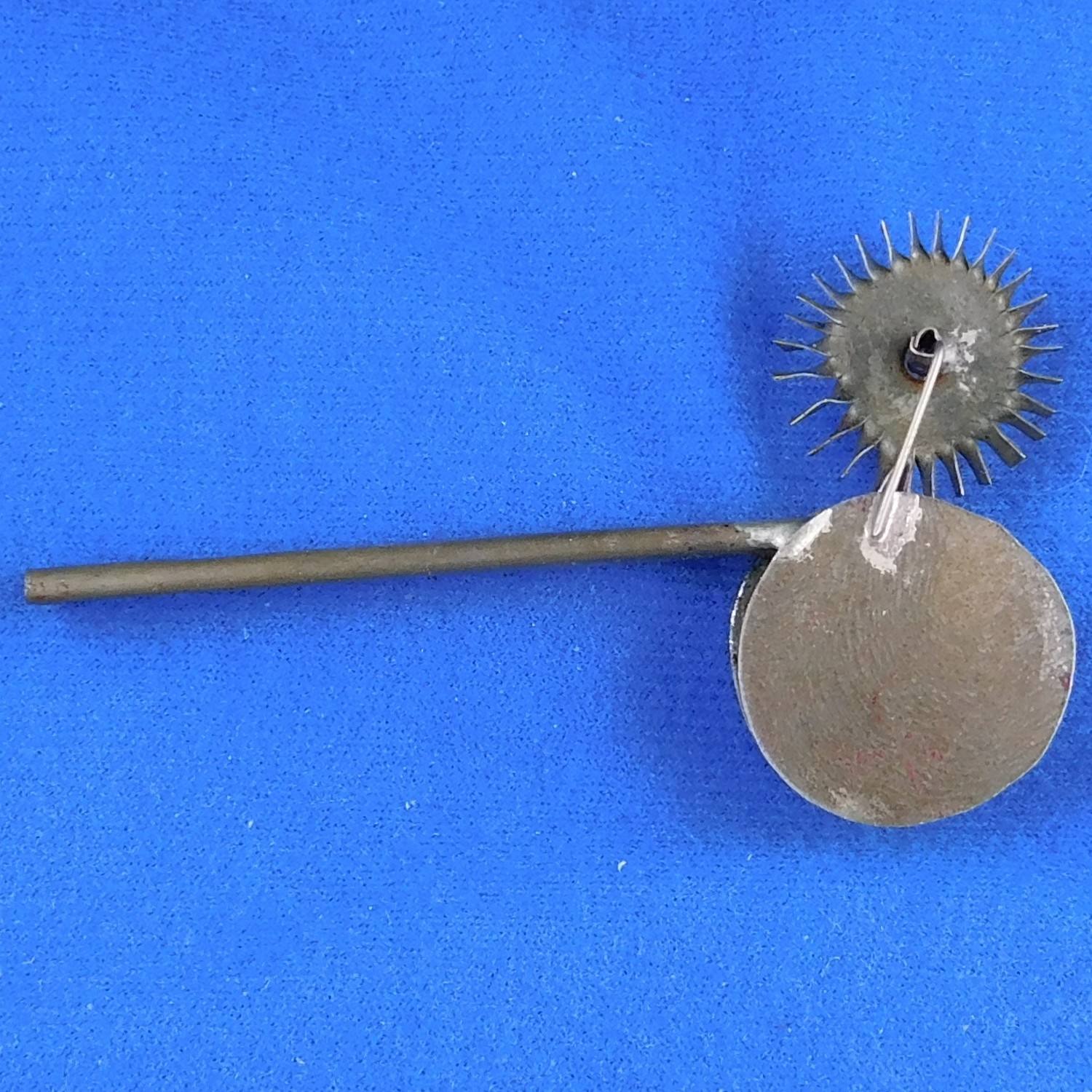
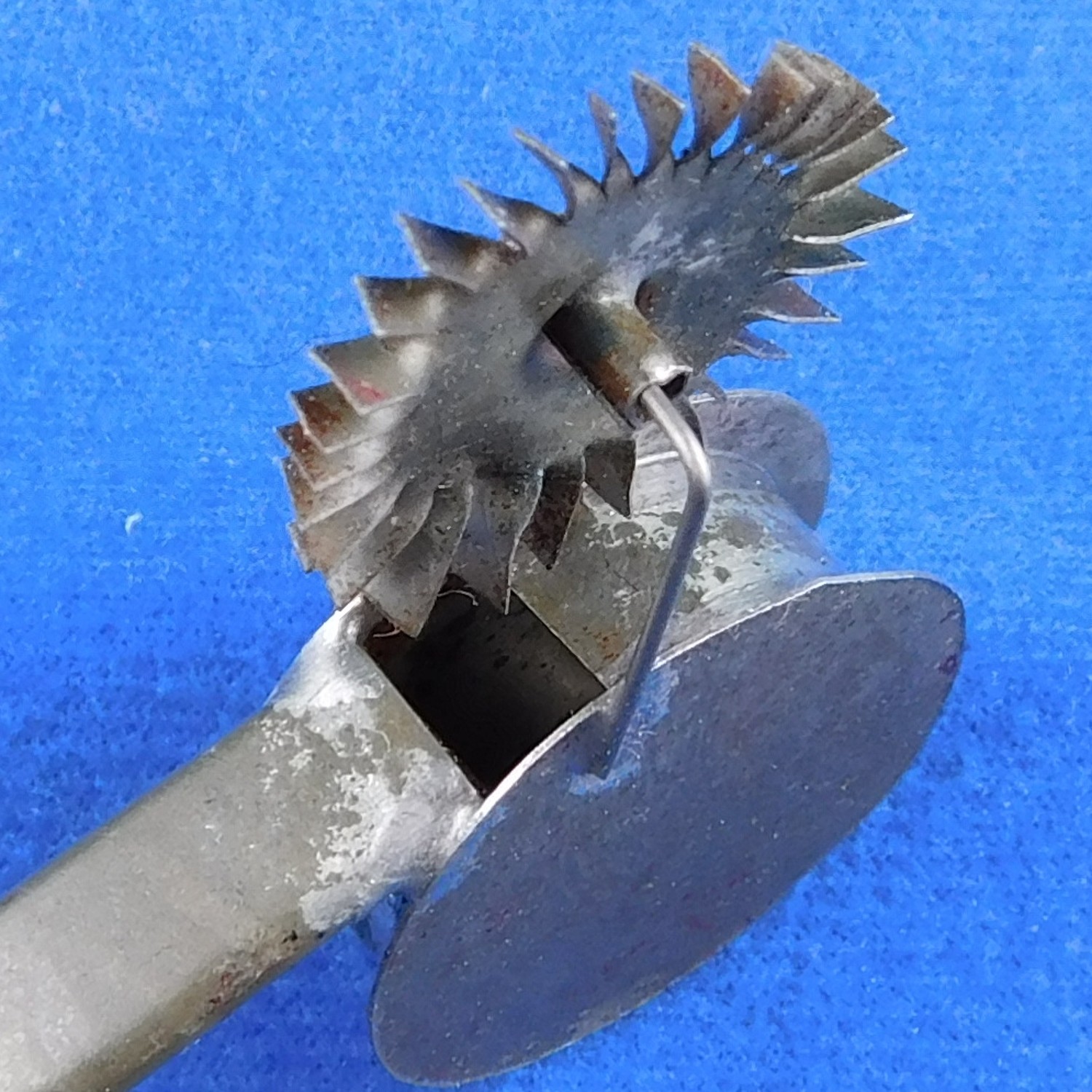
This whistle that was found is much heavier in construction and does not trill. It is high pitched to begin with and yet when blown hard and harder it accelerates and the pitch is raised as in a siren. However it does not have the versatility of an internal rotating 5 hole wheel mechanism siren.
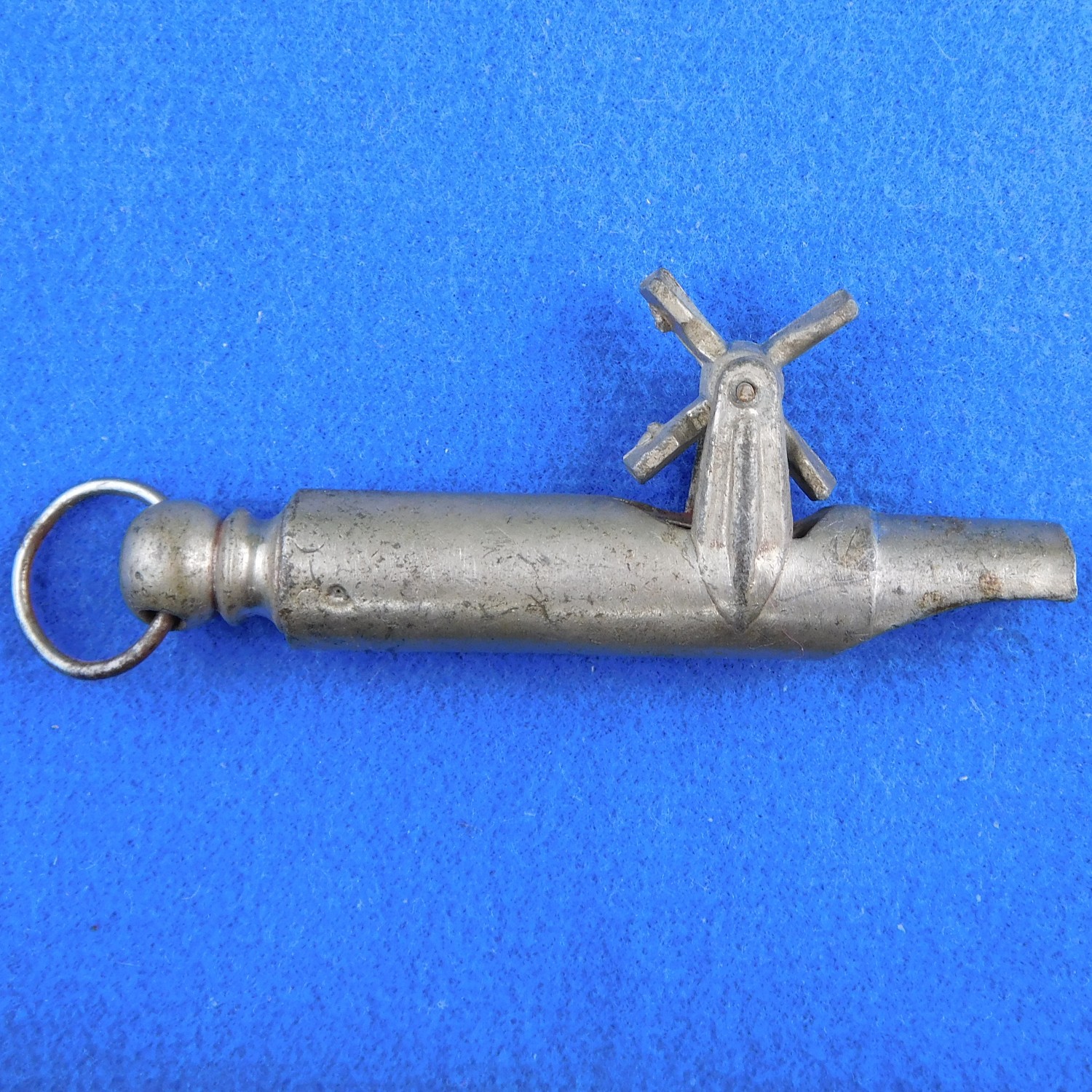
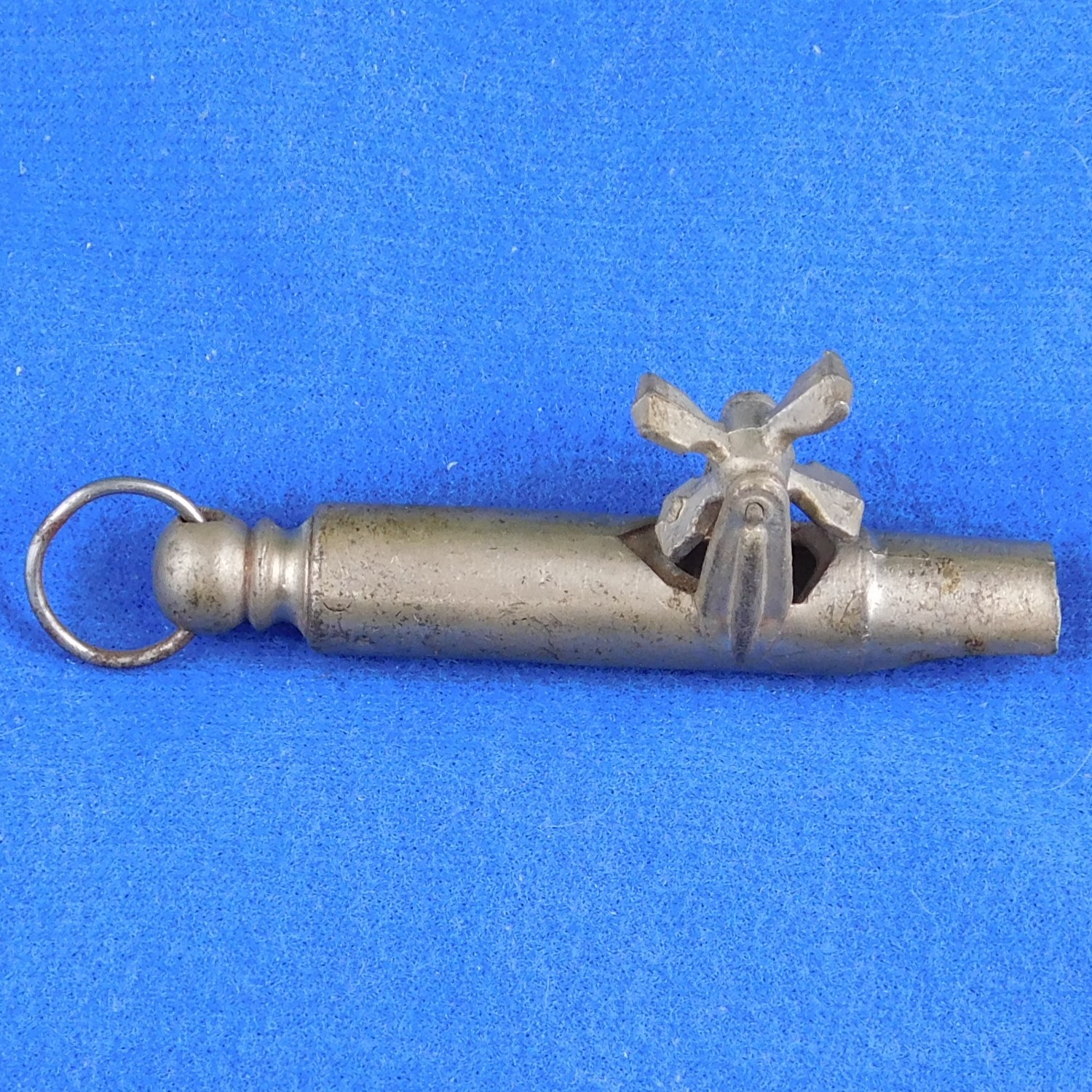
The whistle is very stout although not very long at 2 ¼ inches ( 6.5 cm ). It is a heavy pot metal rather than brass or nickel plated. However the wheel attachment is much better attached than the thin wall tin model.
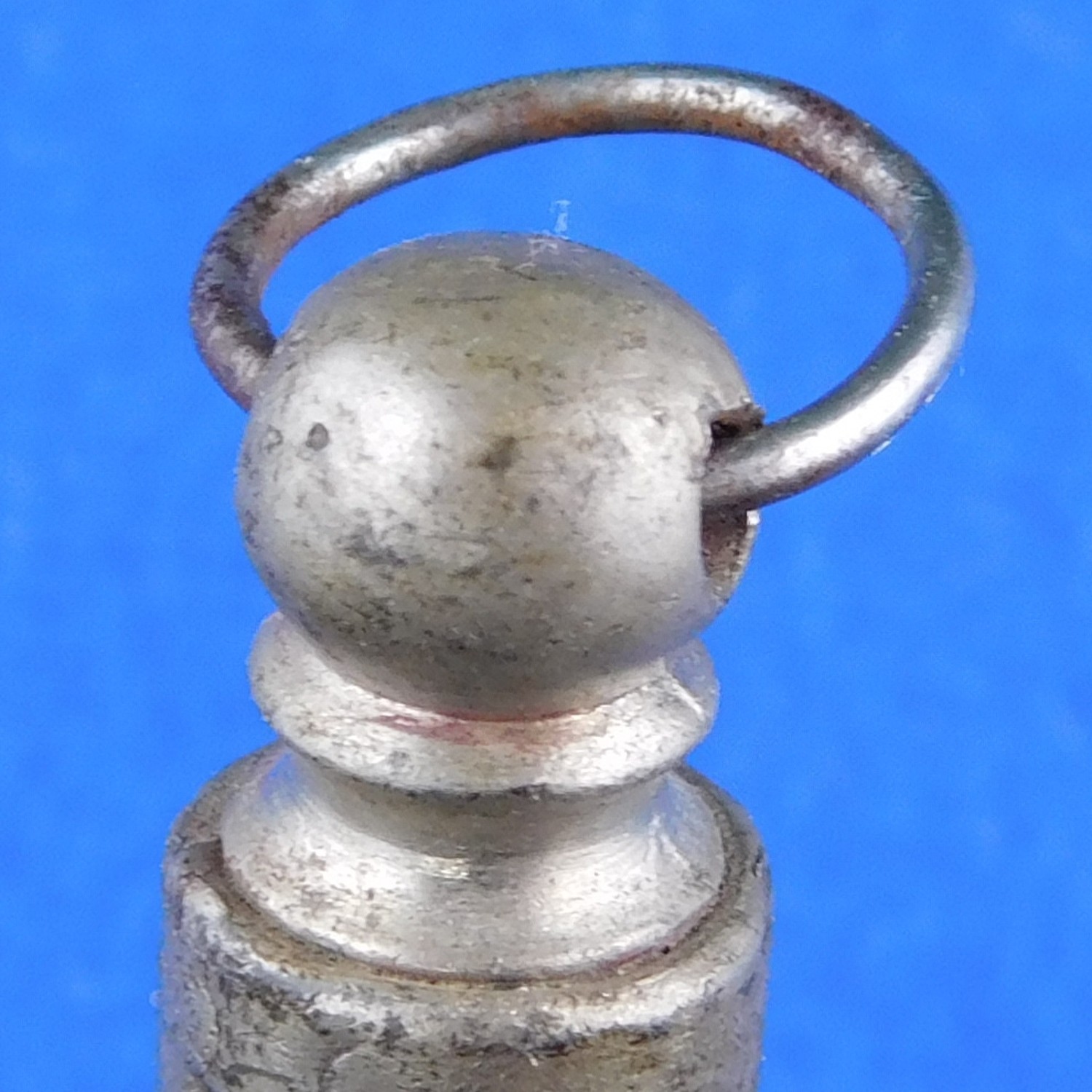
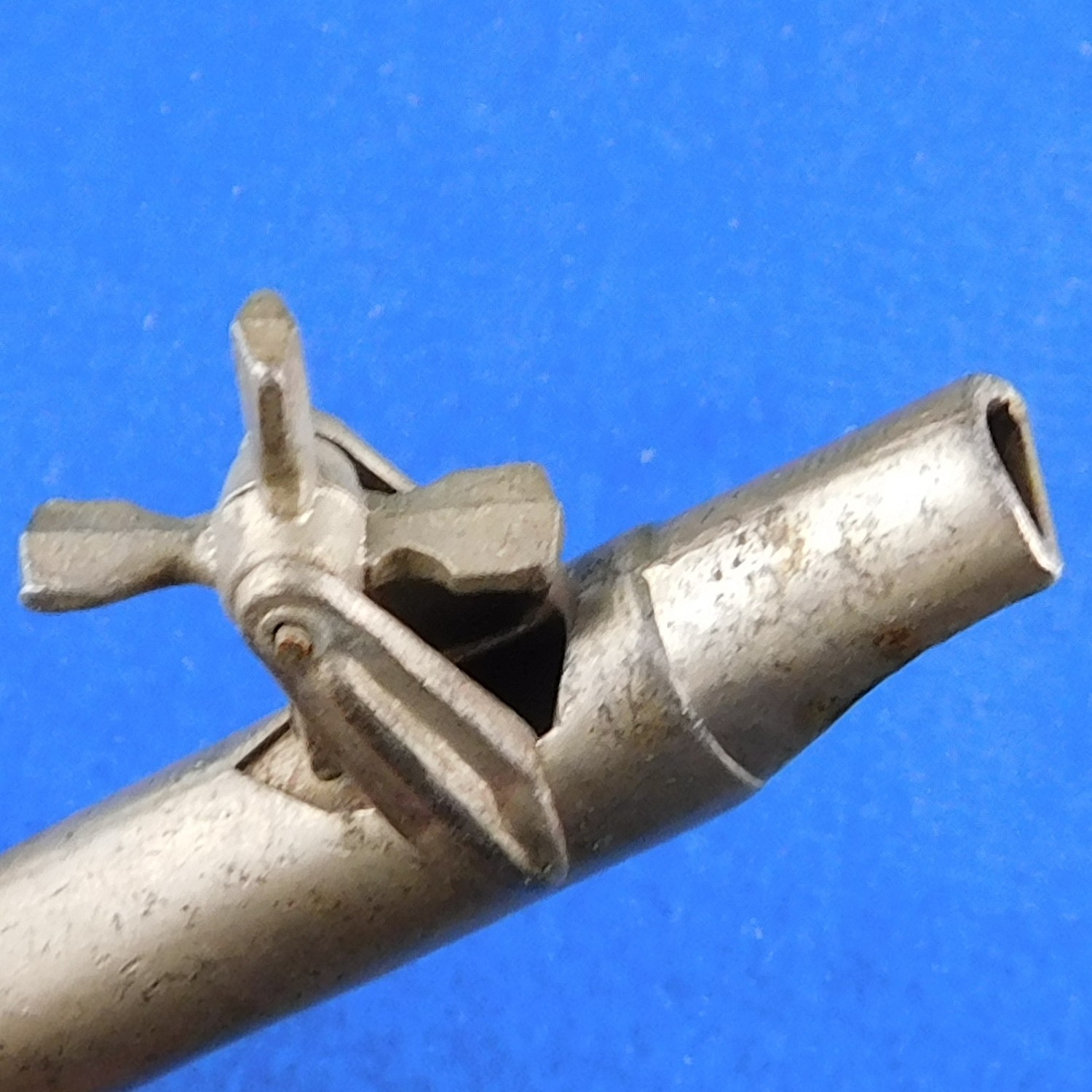
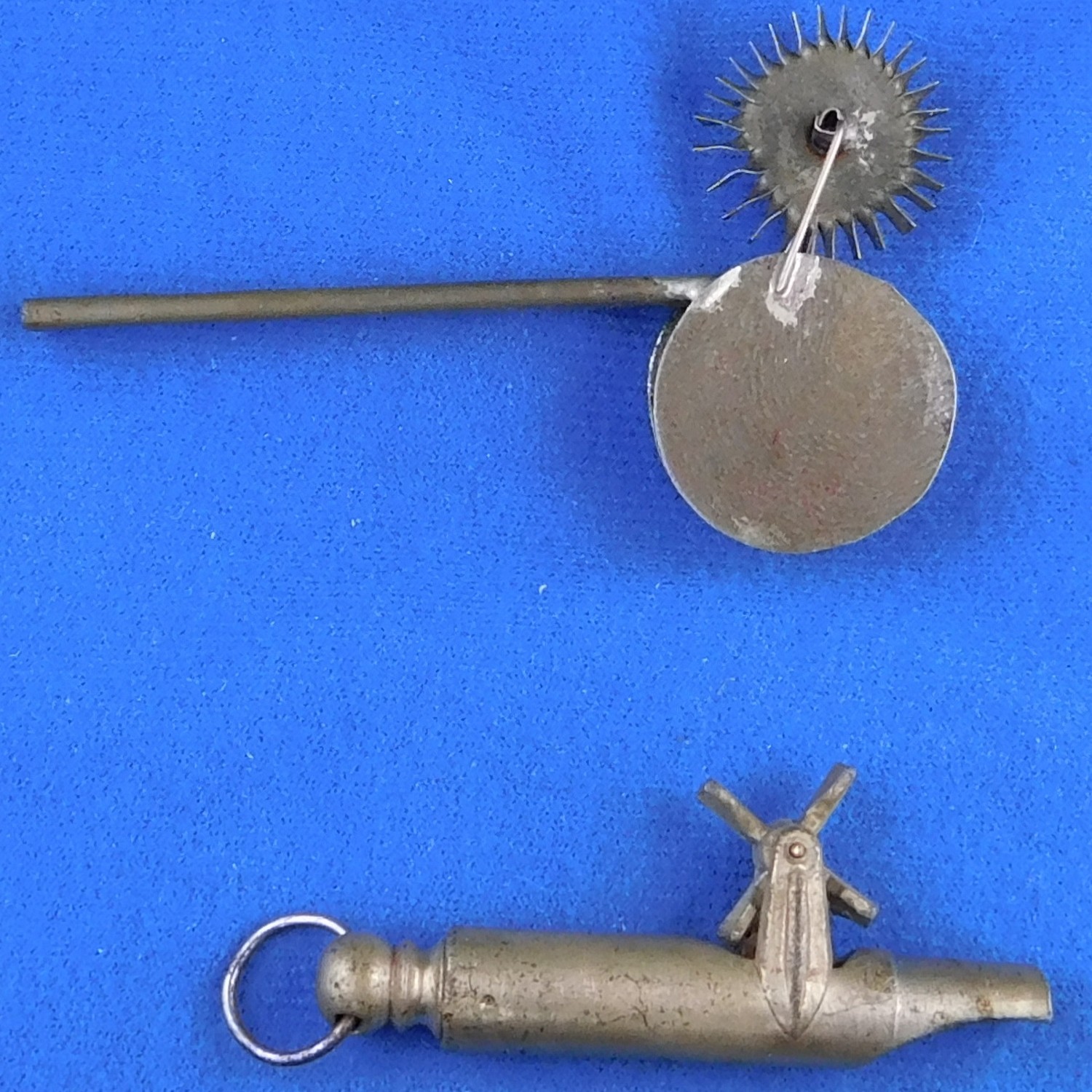
There are certain features that appear German. However no catalog has surfaced for us here at the Whistle Gallery. We will post it if it comes. It would appear circa 1900 to 1940 ??
Bibliography:
Google patent search
TWG
Posted February 5, 2019
